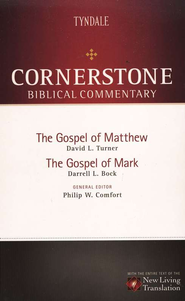The 2014 Easter season coincides with another resurrection of a sort—that of the Gospel of Jesus’ Wife (GJW).
Harvard Professor Karen L. King’s original announcement of this find at the International Association of Coptic Studies conference in Rome led to much furor in September 2012. Although other ancient texts mentioned Jesus’ close relationship to Mary Magdalene, this was the first time Jesus was ever said to speak of “my wife.” Scholars were generally skeptical of the fragmentary manuscript due to its mysterious provenance, its small size (8 cm. wide by 4 cm. high, containing eight partial lines, evidently trimmed out of a larger papyrus sheet), its apparently having been written or brushed by a blunt stylus, its likely dependence on phraseology from the Gospel of Thomas (101, 114), and its debatable grammar and spelling. King’s naming this fragmentary text a Gospel (GJW) contributed to the sensationalism.
Now comes news in the Harvard Theological Review (HTR 107.2, Apr 2014) that recent tests, involving both carbon-dating of the manuscript’s papyrus and micro-Raman spectographic analysis of its ink, lead to a mean date of 741 CE for the papyrus and to the finding that the chemical composition of the ink is consistent with other ancient carbon-based inks. Unfortunately, current methods of testing for the date of the ink would destroy the manuscript.
This evidence makes it more difficult for those who have pronounced the manuscript an outright forgery. Nevertheless, the current HTR which contains Prof. King’s critical edition of the text also airs the opposing views of Brown University Egyptology Professor Leo Depuydt, who focuses on alleged grammatical blunders made by a recent writer who had access to a scrap of ancient papyrus. Depuydt goes so far as to say that the fragment “seems ripe for a Monty Python sketch.” Perhaps such a sketch could be called “The Kamikaze Papyrologists”?
Many bloggers and commenters seem to be unaware that Professor King herself believes this fragment tells us nothing about the actual marital status of Jesus. In her view, the text presents a dialogue between Jesus and his disciples. The five references to women (line one: “my mother, she has given me life;” line three: “Mary is worthy of it;” line 4: “my wife;” line 5: “she is able to be my disciple;” line 7: “I am with her”) provide evidence that Jesus regarded women, wives, and mothers as his true disciples. Those who are aware of the important role played by women in the ministries of Jesus and Paul may find this assertion a bit underwhelming, but King considers the fragment’s positive view of women as a counter-point to the asceticism and negative view of sexuality which came to be common in ancient Christian communities.
What does all this mean for the Christian faithful who still confess the Apostles’ Creed? Actually, not much. Despite the sensationalism attending this fragment, it is already well known that other late gnostic documents speak of Jesus and Mary Magdalene, and that even orthodox mystical exegesis could speak of Jesus’ intimate communion with believers in metaphorical marital language drawn from biblical texts which speak in this way of God and Israel and of Jesus and the church. The fragment’s similarities to the Gospel of Thomas make the gnostic interpretation more likely.
While it may shock the faithful to think of the possibility of their exalted Lord as a married man, consideration of the biblical teaching about his humanity should lessen the jolt. As a Jewish young man in ancient times, Jesus would have been expected to marry and have children. Why he evidently did not do so can be deduced from his teaching in Matthew 19 about marriage, divorce, and singleness. Here Jesus speaks of three kinds of eunuchs, those who have been castrated, those who are congenitally impotent, and those whose personal gifts from God and commitment to God’s kingdom lead them to celibacy. Whatever we find in GJW and other late gnostic texts about Jesus possibly having a wife, we find in the early New Testament fourfold Gospel tradition a person who did not marry due to his radical devotion to his unique mission as the agent of God’s kingdom on earth. That devotion led him all the way to the cross, and it continues to lead his disciples, female and male alike, to selfless kingdom-oriented lifestyles.
[UPDATE: The New York Times, Fresh Doubts Raised About Papyrus Scrap Known as ‘Gospel of Jesus’ Wife’]
 Bio: David L. Turner (PhD, Hebrew Union College-Cincinnati) is Professor of New Testament at Grand Rapids Theological Seminary. Dr. Turner teaches courses in Biblical Hermeneutics, Greek grammar and exegesis, New Testament, Biblical Theology and book studies. He belongs to the Evangelical Theology Society, the Institute for Biblical Research, and the Society for Biblical Literature.
Bio: David L. Turner (PhD, Hebrew Union College-Cincinnati) is Professor of New Testament at Grand Rapids Theological Seminary. Dr. Turner teaches courses in Biblical Hermeneutics, Greek grammar and exegesis, New Testament, Biblical Theology and book studies. He belongs to the Evangelical Theology Society, the Institute for Biblical Research, and the Society for Biblical Literature.

 He’s the author of the commentaries Matthew: Baker Exegetical Commentary on the New Testament (Baker Academic, 2008) and The Gospel of Matthew & The Gospel of Mark: NLT Cornerstone Biblical Commentary (Tyndale House, 2005).
He’s the author of the commentaries Matthew: Baker Exegetical Commentary on the New Testament (Baker Academic, 2008) and The Gospel of Matthew & The Gospel of Mark: NLT Cornerstone Biblical Commentary (Tyndale House, 2005).
